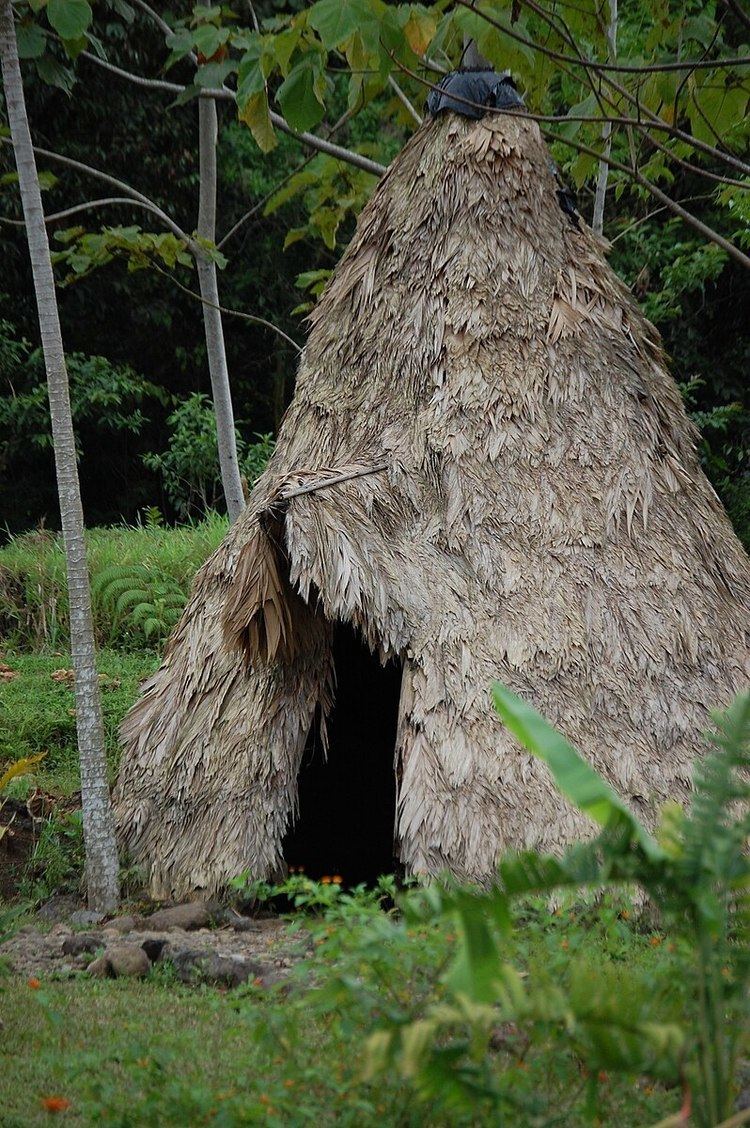 | ||
The Maleku are an indigenous people of Costa Rica located in the Guatuso Indigenous Reserve near the town of Guatuso (San Rafael de Guatuso). Around 600 aboriginal people live on the reserve, making this the smallest tribe in Costa Rica, but outsiders have come into the community as well. Before the Spanish colonization, their territory extended as far west as Rincon de la Vieja, and included the volcano Arenal to the south and Rio Celeste as sacred sites. Today their reserve is concentrated south of San Rafael de Guatuso, an hour north of La Fortuna.
Contents
Reserve
The reserve consists of 3 "palenques" or villages, Palenque Sol, Palenque Tonjibe, and Palenque Margarita. Their economy primarily relies on indigenous art; carvings, paintings of wooden masks and jucara (bowls made from gourds), and musical instruments are their most popular items. These are sold to tourists in the villages or taken to cities like San Jose to be sold there. Most members in the villages (including children) make some type of art or help out, by cutting and preparing the necessary balsa wood trees or fruit needed for the projects. Additionally, many adults leave the reservation to work elsewhere periodically or to relocate permanently. The Maleku’s rate of unemployment, at 10%, is the highest of any Costa Rican indigenous community; self-sustainability is further compromised by the small territory, which preempts their traditional reliance on hunting and fishing. In that reserve they have a still a big leader name Alfredo de Jesus. The reserve also contains two elementary schools that teach the Maleku language and culture.
Tourism
The Maleku still invite tourists to visit their villages, although most tourists prefer to see them perform ceremonies in traditional palm clothing in the nearby town of La Fortuna. Tourists who visit the villages, however, get a better sense of Maleku culture, even if it is somewhat diminished in modern times. One can visit the traditional gardens of healing plants and admire animals that still inhabit the forest, including toucans, frogs, and monkeys.
Housing
The Maleku no longer live in their traditional houses, since the trees necessary to make them are now endangered, nor do they wear their traditional clothes. The Maleku use most of the money they earn to buy back the land they consider to be theirs, since their reserve is actually limited to 15% of the territory granted to them by the Costa Rican government with the foundation of the reservation in 1976. While the land legally belongs to the Maleku, this is not enforced; the majority remains unreturned, having been sold or traded to non-indigenous people before this time in the uneven exchanges typical in the dispossession of indigenous lands. Surrounding fields have been sold to farmers who have cleared the Maleku forest to raise cattle. The Maleku are also devoted to reforestation efforts and plant trees on the lands they reclaim. In addition, they advocate for private owners to reforest the land even if they will not return it to the Maleku.
Today the villages mostly contain cement houses, but still contain a couple of traditional houses used for ceremonies as tourist attractions. The Maleku traditionally bury their dead directly inside their homes, so the dead are never forgotten. Living in cement houses, the Maleku have had to acquire special permission from the Costa Rican government to bury their dead in their backyards.
Diet
Their traditional diet consisted of various plants and animals from the tropical forests. Animals include a wide variety of fish, and turtles, from the Rio Frio, Rio Sol, and Caño Negro and iguanas. The Maleku still hunt for iguana meat and use the skin on their traditional drums. Some plants, while mildly toxic, are still part of a traditional Maleku diet. Medicinal plants are also important to the Maleku, particularly given their rural location and distance from mainstream medical centers.
Vocabulary and Language
70% of the tribe speaks Maleku language. Very few people still speak the native language, and it is in danger of dying out.
